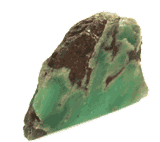| Gemstone Chart |
 Natural Alexandrite Natural Alexandrite
Alexandrite was discovered in 1830 in the Ural mountains of Russia. Alexandrite is also found in Sri Lanka, Brazil, India, Tanzania, Zimbabwe, and most recently in Madagascar. The alexandrite variety of chrysoberyl is one of the rarest and most sought after of all gems.
Color: changing from green to red
Categories: semi-precious stone
Chemical Composition: BeAl2O4
Crystal Group: Orthorhombic
Refractive Index: 1.741 - 1.760
Hardness: 8.50
Density: 3.73
Occurrence: Tanzania, India, Russia, Madagascar, Sri Lanka, Zimbabwe, Zambia
|  Natural Axinite Natural Axinite
Axinite is considered to be a semi-precious gemstone and while limited in nature, gems of good color and size are available, however, faceted stones above 1 carat are rare. Despite being a bit brittle, Axinite¡¯s brilliance and sumptuous colors ranging from a rich clove color to a vivid blue, make it a exquisite and unique gemstone that is keenly sought after by collectors and connoisseurs alike. Currently, the most in demand colors of Axinite are the earth toned browns.
Color: Yellow, brown, violet, brownish red
Categories: semi-precious stone
Crystal Group: Triclinic
Refractive Index: 1.673 ¨C 1.693
Hardness: 6.5 - 7
Density: 3.29
Occurrence: Baja CA, USA; Tanzania
|  Natural Benitoite Natural Benitoite
Benitoite is considered to be a semi-precious gemstone. Very limited in nature and available from only one spot on earth (San Benito County, California), Benitoite is among the 10 rarest gemstones on earth
Color: Blue, white, colorless
Categories: semi-precious stone
Chemical Composition: BaTiSi3O6
Crystal Group: Hexagonal
Refractive Index: 1.757 ¨C 1.804
Hardness: 6.5
Density: 3.65 ¨C 3.68
Occurrence: San Benito County, California
|  Natural Beryl Natural Beryl
Beryl is a semi-precious clear gemstone which usually comes in greens, yellows, and occasionally pinks, ands various shades thereof.
Color: Green, blue, pink, yellow, red
Categories: semi-precious stone
Chemical Composition: Be3Al2(SiO3)6
Crystal Group: Hexagonal
Refractive Index: 1.577(+-.016), 1.583 (+-.017)
Hardness: 7.5
Density: 2.67-2.745
Occurrence: Austria, Columbia, Brazil, Russia, East Africa, Australia, Madagascar, South Africa, Zimbabwe, India, Pakistan, Zambia, Nigeria, U.S.A., Afghanistan
|  Natural Bi Color Tourmaline Natural Bi Color Tourmaline
Bi color tourmaline is the name given to tourmaline which displays more than one color in the same cystal.It is classified as a semi-precious stone.
Color: Green, red, yellow, orange. Brown, green, pink
Categories: semi-precious stone
Chemical Composition: (NaCa)(LI,MgFe,Al)9B3Si6(O,OH)31
Crystal Group: Hexagonal
Refractive Index: 1.624(+.005, -.005) - 1.644(+.006, -.006)
Hardness: 7-7.5
Density: 3.06 (.05, +.15)
Occurrence: East Africa, Brazil, USA, Afghanistan, Nigeria, Madagascar
|  Natural Bixbite Natural Bixbite
Bixbite is a specific kind of emerald stone known as beryl which is also known as red beryl, red emerald or scarlet emerald.
Color: Pink, Red
Categories: semi-precious stone
Chemical Composition: Be3Al2(SiO3)6
Crystal Group: Hexagonal
Refractive Index: 1.577(+-.016), 1.583 (+-.017)
Hardness: 7.5
Density: 2.67-2.745
Occurrence: Utah, U.S.A.
|  Natural Chrysoberyl Natural Chrysoberyl
The Chrysoberyl family is best known for the more valuable alexandrite and catseye varieties. Faceted chrysoberyl is a beautiful gem which is not as well known in its own right. Apart from the high hardness, it takes a good polish and has a good luster.
Color: yellow, green, color changing, red, blue-green, greenish-yellow or brown
Categories: semi-precious stone
Chemical Composition: BeAl2O4
Crystal Group: Orthorhombic
Refractive Index: 1.741 - 1.760
Hardness: 8.5
Density: 3.73
Occurrence: Ceylon, Tanzania, Russia, Madagascar, Brazil.
|  Natural Chrysoprase Natural Chrysoprase
Chrysoprase is a gemstone variety of chalcedony or cryptocrystalline quartz, colored by trace amounts of nickel.
Categories: semi-precious stone
Chemical Composition: SIO2
Crystal Group: Hexagonal
Refractive Index: 1.544 - 1.553
Hardness: 7
Density: 2.65 - 2.66
Occurrence: Australia, Tanzania
|
|
